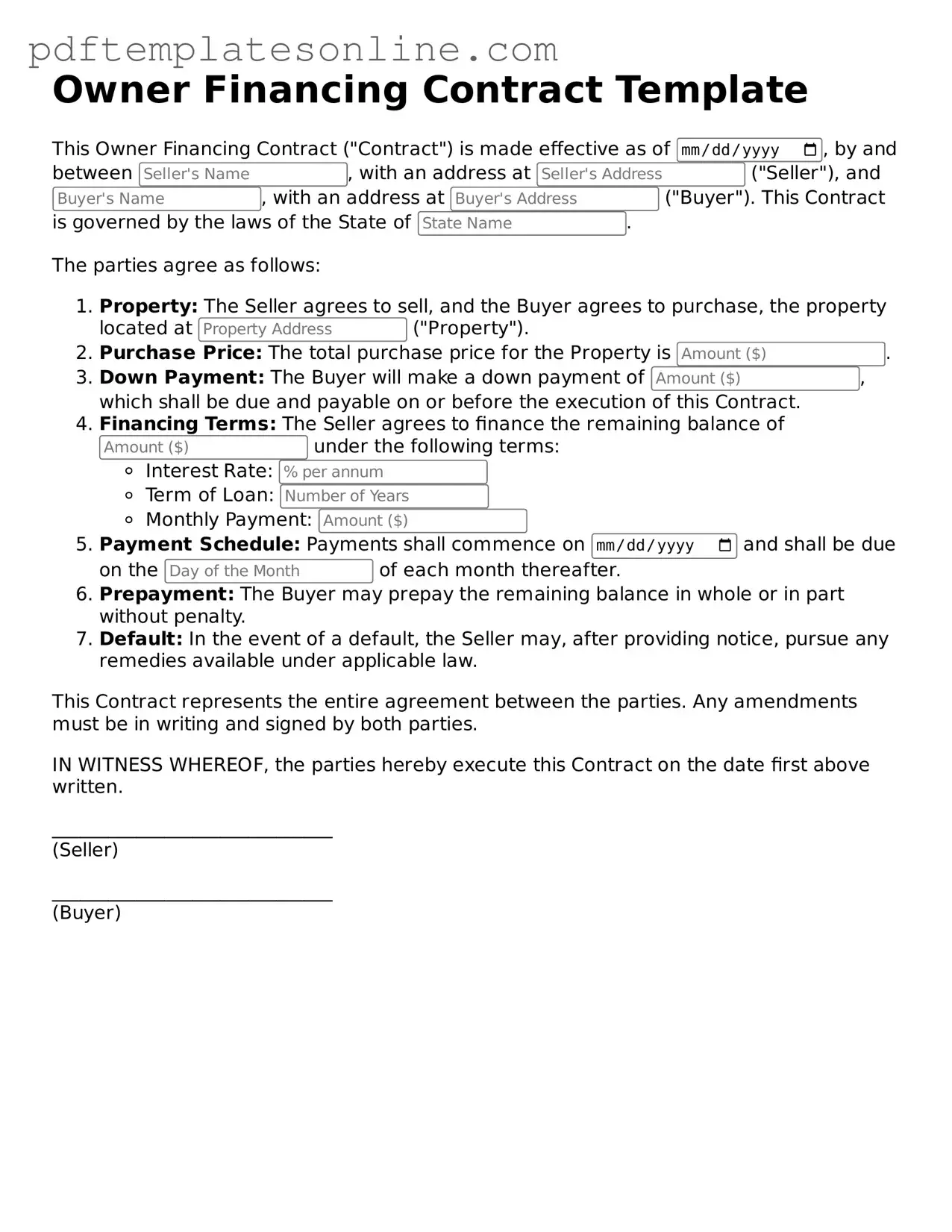When individuals fill out the Owner Financing Contract form, several common mistakes can lead to complications later on. Understanding these errors is essential for ensuring a smooth transaction. One frequent mistake is failing to provide accurate property details. This includes the address, legal description, and any relevant identifiers. Inaccuracies can result in disputes or delays in the financing process.
Another common error is neglecting to specify the financing terms clearly. The interest rate, payment schedule, and loan duration should be explicitly stated. Ambiguities in these areas can create misunderstandings between the buyer and seller, potentially leading to financial strain or legal issues down the line.
People often overlook the importance of including contingencies in the contract. Contingencies serve as protective measures for both parties. For instance, specifying conditions under which the contract may be voided can safeguard against unforeseen circumstances. Without these clauses, individuals may find themselves bound to unfavorable terms.
Additionally, many individuals fail to include all necessary signatures. An incomplete contract can invalidate the agreement. Each party involved must sign the document, and if there are co-signers, their signatures are equally important. Ensuring that all required parties have signed is crucial to enforceability.
Another mistake arises from not seeking legal advice before finalizing the contract. While it may seem straightforward, owner financing agreements can be complex. Consulting with a legal professional can provide clarity and help identify potential pitfalls. This step is particularly important for those unfamiliar with real estate transactions.
Finally, individuals sometimes neglect to keep copies of the signed contract. Document retention is vital for future reference. Having a copy ensures that all parties can refer back to the terms of the agreement if any disputes arise. Proper documentation can prevent misunderstandings and protect the interests of everyone involved.
